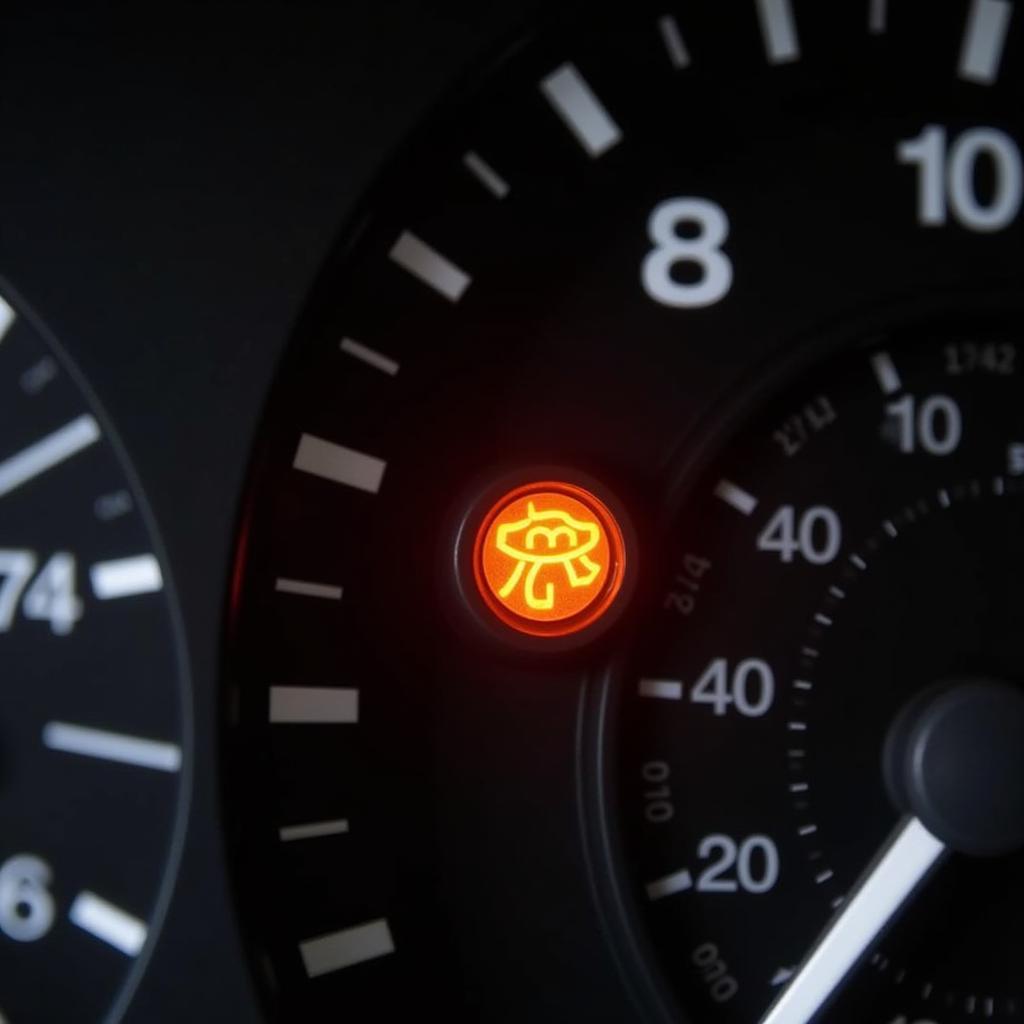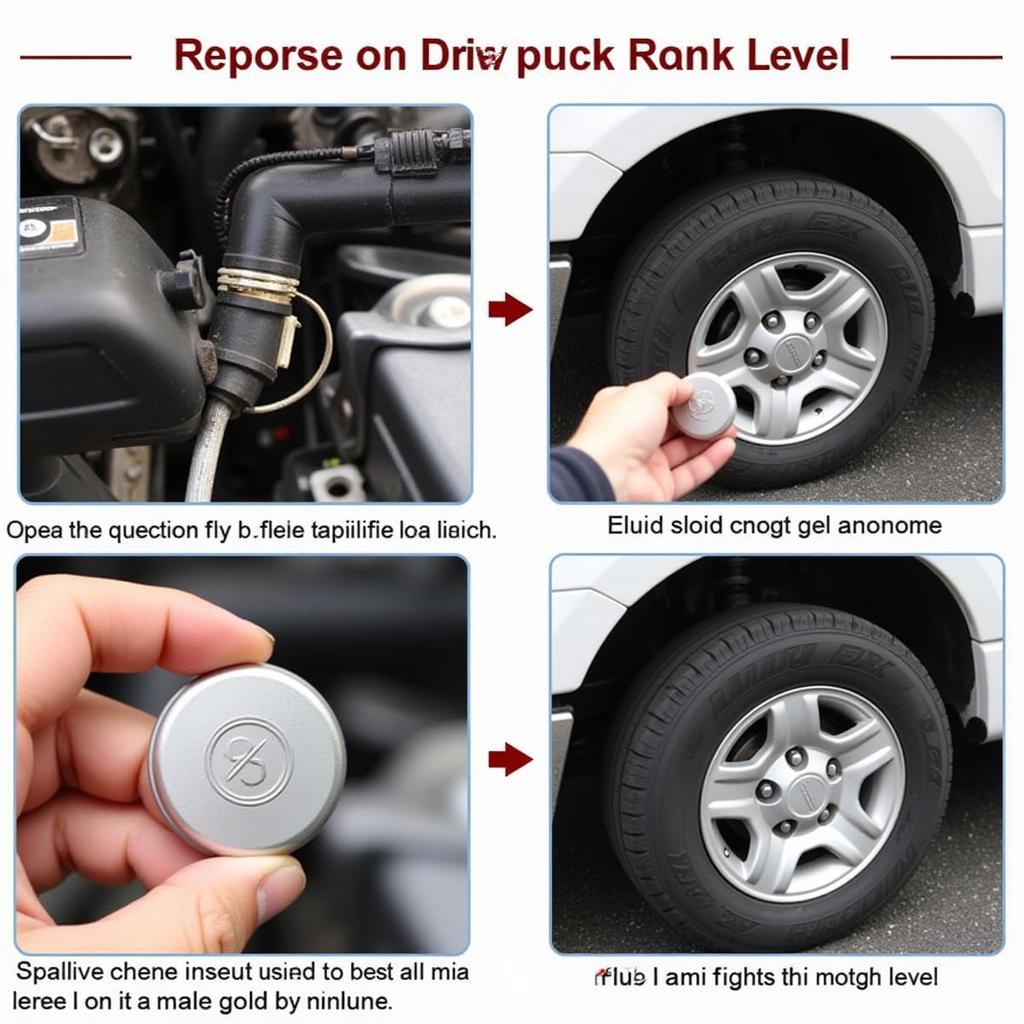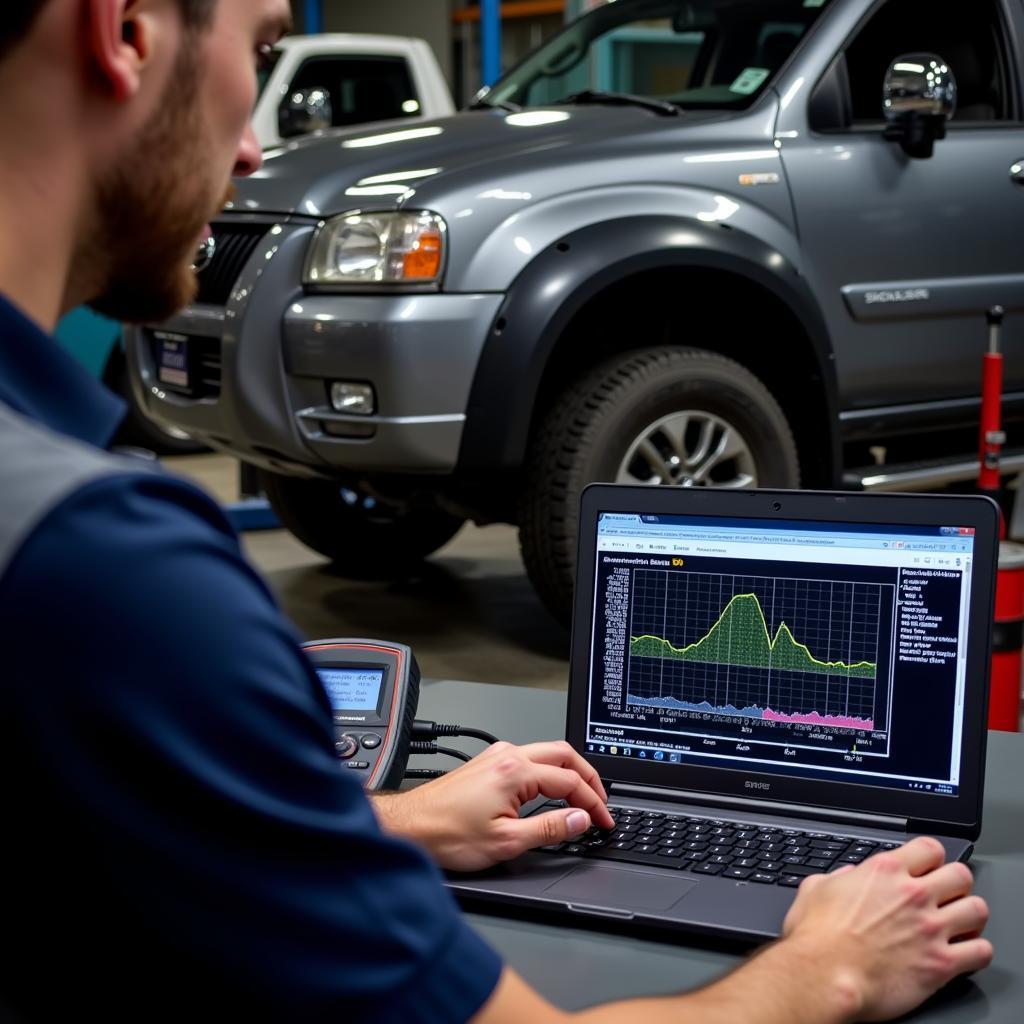The brake warning light on your 2004 Ford F150 is a crucial safety feature, illuminating on your dashboard to alert you to potential issues with your braking system. If this light remains on constantly, it signals an underlying problem that requires immediate attention. Ignoring this warning could jeopardize your safety and result in costly repairs. This guide provides a comprehensive overview of common causes, troubleshooting tips, and solutions for a persistent brake warning light on your 2004 Ford F150.
Common Causes of a Steady Brake Warning Light
While a malfunctioning brake light switch or low brake fluid level are typical culprits, several other factors can trigger a persistent brake warning light on your 2004 F150:
- Worn Brake Pads: Brake pads are designed to wear down gradually with use. When they reach a critically low thickness, the brake warning light is activated, indicating the need for immediate replacement.
- Faulty ABS System: A problem within the Anti-lock Braking System (ABS), such as a malfunctioning sensor or control module, can illuminate the brake warning light.
- Hydraulic System Issues: Leaks or low fluid levels within the master cylinder, brake lines, or wheel cylinders can disrupt the hydraulic pressure needed for braking, triggering the warning light.
- Parking Brake Engagement: If the parking brake is not fully disengaged, it can trigger the brake warning light. Make sure to release the parking brake completely before driving.
- Electrical Problems: Issues with wiring, connectors, or the instrument cluster itself can cause false signals, leading to the brake warning light staying on.
 2004 Ford F150 Dashboard with Illuminated Brake Warning Light
2004 Ford F150 Dashboard with Illuminated Brake Warning Light
Troubleshooting a Persistent Brake Warning Light
Before heading to a mechanic, there are several checks you can perform at home to diagnose the issue:
-
Check Brake Fluid Level: Locate the brake fluid reservoir under the hood and inspect the fluid level. If it’s below the minimum mark, add the appropriate DOT 3 brake fluid. Ensure you use a clean funnel and avoid spilling any fluid, as it can damage your vehicle’s paint.
-
Inspect Brake Pads: Visually examine the brake pads through the spaces between the wheel spokes. If you notice the pads are significantly thin or metal-on-metal contact is evident, it’s time for a replacement.
-
Check Parking Brake: Ensure the parking brake is fully released. If the light remains on even after releasing the parking brake, there might be an issue with the parking brake switch or cable.
-
Inspect for Leaks: Carefully examine the brake lines, master cylinder, and wheel cylinders for any signs of fluid leaks. Look for wet spots, drips, or puddles of brake fluid.
 Checking Brake Fluid Level in 2004 Ford F150
Checking Brake Fluid Level in 2004 Ford F150
When to Seek Professional Help
If your brake warning light persists after performing these checks, or if you notice any leaks or hear unusual noises while braking, it’s essential to seek professional assistance. Driving with a compromised braking system is highly dangerous.
Remote Diagnostics and Software Solutions
In many cases, the cause of a persistent brake warning light, particularly those related to the ABS system, requires specialized diagnostic equipment. Advancements in automotive technology have paved the way for remote diagnostics and software solutions.
“Remote diagnostics can quickly pinpoint the root cause of your brake warning light issue,” says Jake Miller, a certified automotive electrical technician with over 15 years of experience. “We can often resolve software-related problems remotely, saving you time and money on a trip to the shop.”
Remote diagnostic services can identify faulty sensors, ABS module issues, and other electronic problems. These services often involve connecting your vehicle to a diagnostic tool and transmitting data to a remote technician.
Preventative Maintenance
Regular maintenance is crucial for preventing brake warning light issues. Follow your manufacturer’s recommended maintenance schedule for brake fluid flushes, brake pad replacements, and inspections.
 Remote Diagnostics of a 2004 Ford F150 Brake System
Remote Diagnostics of a 2004 Ford F150 Brake System
Conclusion
A persistent brake warning light in your 2004 Ford F150 is a serious issue that should never be ignored. Addressing the problem promptly ensures your safety and prevents potentially costly repairs. While some troubleshooting can be done at home, seeking professional assistance is crucial when dealing with complex braking system issues. Modern remote diagnostics and software solutions offer convenient and efficient ways to diagnose and resolve many brake warning light problems, keeping your 2004 F150 running smoothly and safely.

